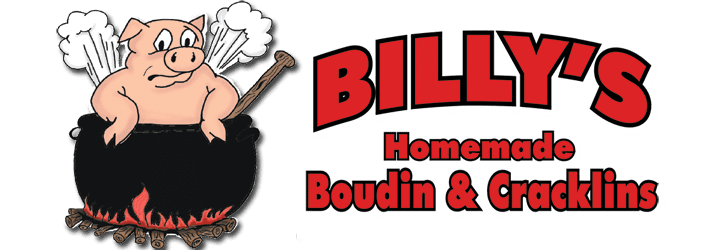In Cajun country, pork isn’t just a foodstuff; it’s a way of life. As poor people, Cajuns had a lot of love for pork right from the moment they settled in South Louisiana for the same reason it was popular in so many poor cultures: pigs eat nearly anything, don’t require much space or resources, and almost every part of it is edible. As a result, Cajun people were quick to be creative with different cuts of pork, hence why so many iconic local staples such as boudin and cracklins are pork-based.
It’s no secret that there are many different cuts of pork, and knowing which is which is crucial in selecting one for a dish. The tenderness, density, and fat content vary greatly from cut to cut and can have a profound impact on how they will impact a dish. There’s no need to go overboard and learn every in and out of pork to have a better understanding of it, however. Knowing the basic cuts is the perfect start, and once you’ve been cooking with it for a while, you’ll naturally develop a keen sense of when to use what!
Chops
We’ve all heard of pork chops but, despite the similarities between the different kinds of chops, they can actually come from the shoulders, the rump, or anywhere along the length of the pig! Where along the body the chops come from determines the fat content of the chop. A good rule of thumb is: the less fat, the easier it is to accidentally dry out the chop. One way to avoid a dry pork chop is to keep the bone on. The fat surrounding the bone and the marrow will help to preserve some moisture. Another way is to fry or broil the chop. These fast-cooking methods will also help keep a pork chop nice and juicy. Stuffing them with something that has moisture is another sure-fire way to enhance a chop!
Chops are versatile in terms of what seasonings you can use on them, so feel free to get creative with various Cajun seasoning blends! You can also buy them pre-seasoned or marinated to save yourself some time and effort while still ensuring your meal is flavorful.
Loin
The loin is a long and moderately fatty strip that runs the length of the body and, when cut into medallions, has a lot in common with traditional chops. When left whole, however; it makes an excellent roast! Our suggestion: cut it lengthwise and stuff it with your favorite filling or seasoning blend and wrap it in bacon to create a sumptuous meal the whole family will love!
Tenderloin
With its dark color and very low fat content, the tenderloin is one of the most lean and tender cuts of pork available (as the name suggests). It’s a narrow strip that runs along the back of the animal and is generally a little pricier than other pork cuts. It can be cut into medallions for tiny chops, but just like the loin, it makes a great roast when stuffed with anything from boudin to crawfish!
Ham and Hocks
These come from the hindparts of the pig and their versatility is well known! From a spiralized honey-roasted ham for the holidays to a flavorful addition to a soup or stew, they appear in dishes across the culinary landscape. The close proximity of bone, tissue and muscle are the source of their iconic flavor.
Ribs
There are two kinds of pork ribs: back ribs and spare ribs. Back ribs are the curved portion of ribs that exist closer to the spine. Though lean and short compared to spare ribs, they can make a great meal when they’re not overcooked or underseasoned! Spare ribs, on the other hand, are the flatter ribs that are closer to the bottom of the rib cage. They are generally fattier and more flavorful, which makes them highly popular.
Belly
This extra-fatty and flavor-rich cut is responsible for some of the most popular pork products around: namely, cracklins and bacon. Affordable, moist, and can be cooked for a long time before it’s overdone—there’s so much to love about pork belly. Cracklins are our favorite thing that comes out of this cut (they’re what happens when you keep the skin on), but the fat is also useful in making sausage or to add moisture and flavor to dishes such as greens and beans!
Shoulder AKA Butt
This is probably the cut that causes the most confusion amongst pork novices! While many refer to this cut as the shoulder to avoid confusion, it’s known in many circles as pork butt or a boston butt, and it has even more uses than it does names! This rich cut is marbled evenly with fat and is not only a marvelous roast when stuffed and seasoned, it can also be cut into pork fingers (also known by another confusing name: country style ribs). This cut is used in everything from boudin and andouille sausage to tasso—a delicious Cajun specialty. When cut into small chunks, it’s very at home in red beans or jambalaya.
Bonus Cuts
Most Cajuns will tell you the cuts don’t stop there! We wouldn’t have pork rinds without the skin, and pork cheeks make a wonderfully delicious addition to lots of meals. The iron-rich liver is one of the traditional ingredients of boudin, too! The neck, stomach (tripe), intestines (chitterlings) and even feet are popular food items in Cajun country! When it comes to the hog, we say: waste not, want not!
We Know Pork
Cajuns and pork are an age-old romance. As a result, at Billy’s Boudin and Cracklins, we’re pretty much the authority on pork. If you love the hog even half as much as we do, check out our wide selection of products, pork and otherwise, and be sure to follow us on Facebook and Instagram. Definitely sign up for our mailing list too: you’ll receive delicious recipes, deals and more!
